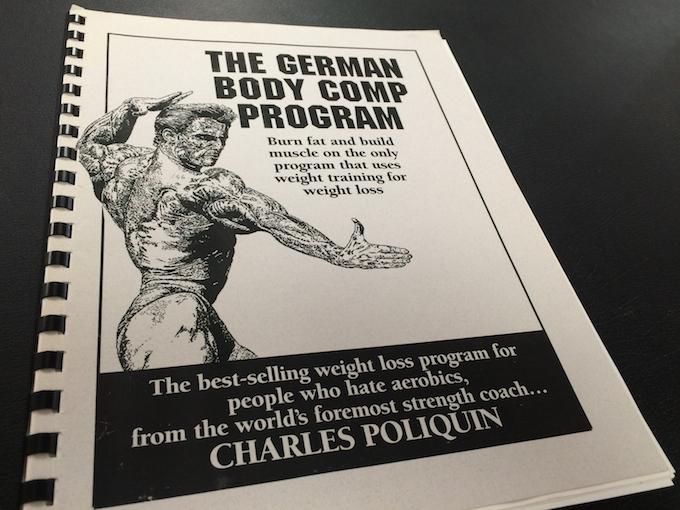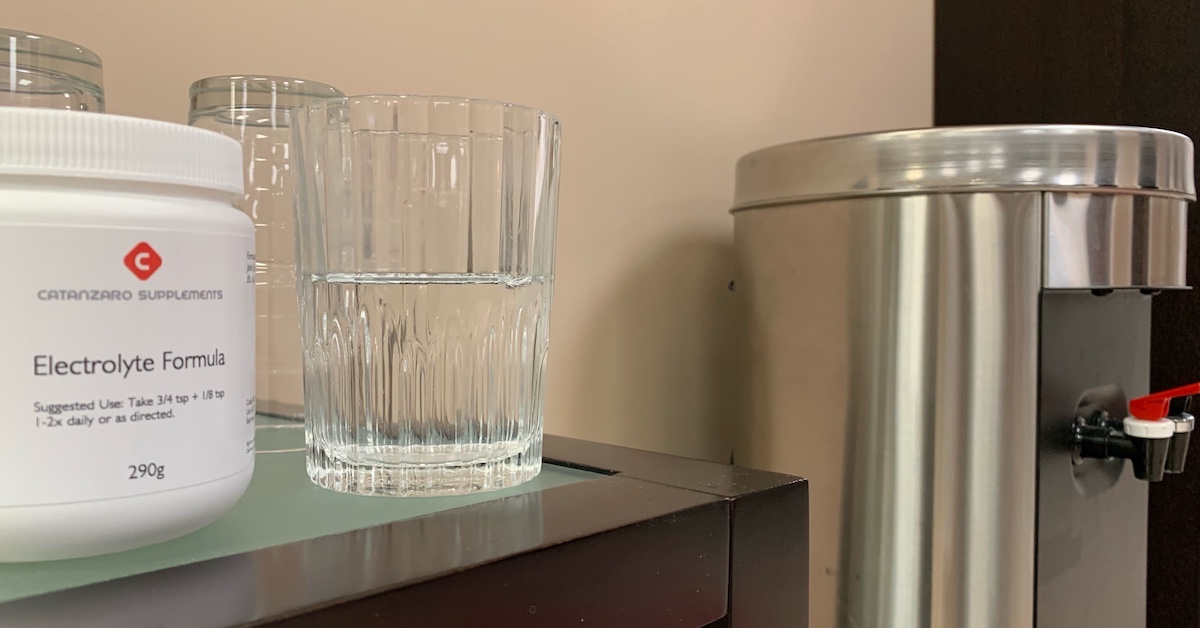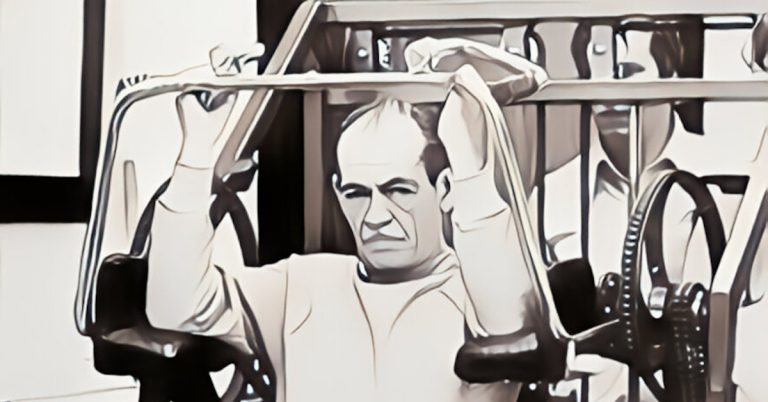Circuit training is a well-known strength and conditioning method where you perform a series of exercises in rotation with varying loads and equipment and usually with minimal rest. A circuit may be repeated several times depending on your training status and the number of exercises involved.
This form of training provides plenty of variety and is useful when training children, beginners, a large group of individuals, or when traveling. But circuit training can also be quite useful for advanced trainees looking to get lean; however, it should be conducted in a specific manner for best results.
Alternating between sets of upper and lower body exercises allows you to “decongest” one half of the body by circulating fluid to the other half, which improves recovery and ultimately performance. This is the premise behind Bob Gajda’s Peripheral Heart Action (PHA) training system. As a result, you’re able to use protocols that involve higher reps and lower rest. Of course, we all know that these types of workouts produce high lactate levels and a high amount of fatigue, but you’re able to manage it better due to the upper-lower “zigzag” sequence of exercises. Gajda contends that the boost to circulation and recovery through PHA circuits can result in greater lifting performance than using straight sets.
The bottom line with PHA is to work muscles that are far apart from each other, take little rest, and keep the work moving around the body. This type of training is a killer, especially when you’re not used to it, so be prepared. When you show up to the gym, it’s time to work!
Here are three circuit-training programs that’ll get you “lean and mean” in no time. The intensity increases from one program to the next. Start at the first one and work your way up to the third one. You can do all three in succession, one right after the other, and then insert a strength/hypertrophy phase, or do a strength/hypertrophy phase after you complete each individual circuit-training program. I prefer the latter approach since you tend to maintain a greater level of muscle mass and strength, but the former is useful if you have quite a bit of fat to shed. Pick your poison and go with it.
Program #1 – High Reps, Minimal Rest
Circuit #1
1. Back Squat: 3 x 15-20 @ 1010, 10s
2. Flat Dumbbell Press: 3 x 15-20 @ 1010, 10s
3. Prone Leg Curl: 3 x 15-20 @ 1010, 10s
4. Standing Military Press: 3 x 15-20 @ 1010, 10s
5. Supine Cable Knee-In: 3 x 15-20 @ 1010, 10s
6. Bent-Over EZ-Bar Row: 3 x 15-20 @ 1010, 180s
Circuit #2
1. Incline Dumbbell Press: 3 x 15-20 @ 1010, 10s
2. Seated Leg Extension: 3 x 15-20 @ 1010, 10s
3. Front Lat Pulldown: 3 x 15-20 @ 1010, 10s
4. Standing Calf Raise: 3 x 15-20 @ 1010, 10s
5. Flat EZ-Bar Triceps Extension: 3 x 15-20 @ 1010, 10s
6. Semi-Stiff-Leg Barbell Deadlift: 3 x 15-20 @ 1010, 180s
PHA can be quite effective, but the reps are a touch high and the rest interval a touch low for most lifters that hoist big weights. If you normally train for relative strength and then jump into PHA without making the appropriate adjustments, good luck! You won’t survive past one or two rounds (circuits). But if implemented correctly, PHA can improve muscular endurance, work capacity, body composition, and dare I say it… cardiorespiratory health in short order.
This is a revised version of PHA as presented in the book Encyclopedia of Bodybuilding. There’s only ten seconds of rest between each exercise of a circuit – basically, just enough time to get from one station to the next – and then three minutes of rest after you complete the circuit. Try to complete three sets of each circuit so start conservative initially. Keep a bit in the tank and don’t use maximum loads. Do this workout three days a week on non-consecutive days. For example, training on Monday, Wednesday, and Friday is popular since it frees up the weekend.
It would be nice to end it there and move on to Program #2, but unless you’re a beginner you’ll be faced with a problem. Anyone with at least a year or two of serious and consistent training under their belt will not be able to complete the program as outlined above three times a week for a month. The second workout alone would be tough and you’ll dread going to the gym.
Fact is, if you’ve built up a decent amount of strength over the years, even if you keep some in reserve when you commence this routine, 48 hours is just not enough recovery. A two-day system is required where you alternate between one of two workouts each session. That will provide ample recovery and allow you to succeed over the span of four weeks. Here’s what Day 2 would look like:
Circuit #1
1. Wide-Stance Back Squat: 3 x 15-20 @ 1010, 10s
2. Parallel-Bar or Bench Dip: 3 x 15-20 @ 1010, 10s
3. Reverse Hyperextension: 3 x 15-20 @ 1010, 10s
4. Seated Arnold Press: 3 x 15-20 @ 1010, 10s
5. Swiss Ball Crunch: 3 x 15-20 @ 1010, 10s
6. Seated Cable Row: 3 x 15-20 @ 1010, 180s
Circuit #2
1. Incline Barbell Press: 3 x 15-20 @ 1010, 10s
2. Seated Leg Press: 3 x 15-20 @ 1010, 10s
3. Chin-Up or Reverse-Grip Pulldown: 3 x 15-20 @ 1010, 10s
4. Seated Calf Raise: 3 x 15-20 @ 1010, 10s
5. Standing Rope Pressdown: 3 x 15-20 @ 1010, 10s
6. Back Extension: 3 x 15-20 @ 1010, 180s
Program #2 – Moderate Reps, Very Low Rest
Day 1
A1. Dumbbell Lunge: 4 x 12-15 @ 20X0, 30s
A2. Sternum Lat Pulldown: 4 x 10-12 @ 3011, 30s
A3. Prone Feet-Neutral Leg Curl: 4 x 10-12 @ 4010, 30s
A4. Decline Dumbbell Triceps Extension: 4 x 10-12 @ 4010, 30s
B1. Back Squat: 3 x 12-15 @ 3010, 30s
B2. One-Arm Cable Row: 3 x 10-12 @ 4010, 30s
B3. Seated Good Morning: 3 x 12-15 @ 3010, 30s
B4. Standing Close-Grip Barbell Curl: 3 x 10-12 @ 4010, 30s
Day 2
A1. Side Back Step-Up: 4 x 12-15 @ 20X0, 30s
A2. Wide Neutral-Grip Lat Pulldown: 4 x 10-12 @ 3011, 30s
A3. Semi-Stiff-Leg Dumbbell Deadlift: 4 x 10-12 @ 4010, 30s
A4. Seated EZ-Bar French Press: 4 x 10-12 @ 3110, 30s
B1. Hack Squat: 3 x 12-15 @ 3010, 30s
B2. Seated Rope Row to Neck: 3 x 10-12 @ 2012, 30s
B3. Standing Calf Raise: 3 x 10-12 @ 2210, 30s
B4. Flat Neutral-Grip Dumbbell Press: 3 x 10-12 @ 4010, 30s
Consider PHA as the predecessor, if you will, to Charles Poliquin’s German Body Comp system (where Gajda focused on the cardiovascular benefits, Poliquin on the hormonal advantage). Here’s a revised version of the last two workouts from Poliquin’s original spiral-bound text The German Body Comp Program that was published in 1997. Many things have changed since then, some minor and some major. For example, a minor change is that three-digit tempos were used back then and today we use four. A major change involves the tortillas, multi-grain bread, yogurt, skim milk, orange juice, applesauce, raisins, cream of wheat, oatmeal and other morning carbs that are listed in the diet plans at the end of the book, which are a far cry from the meat-and-nuts breakfast that Poliquin is now famous for.

Each workout is essentially two circuits of four exercises and you can see how similar it is to the PHA system except that there’s greater rest and lower rep ranges are used. The book presents each day as a separate workout to be performed three times a week for three weeks, but as mentioned previously, that may only be appropriate for beginners. For intermediate or advanced trainees, alternate between Day 1 and Day 2 each session. You should be able to last up to a month on this program (six training exposures per day) and make progress each workout before requiring a change.
Program #3 – Moderate Reps, Low Rest
Day 1
1. Mid-Supinated-Grip Chin-Up: 4 x 8-10 @ 2-0-X-0, 60s
2. Incline Pronated-Grip Dumbbell Press: 4 x 8-10 @ 2-0-X-0, 60s
3. Heels-Elevated Back Squat: 4 x 8-10 @ 2-0-X-0, 60s
4. Incline Hammer Curl: 4 x 8-10 @ 2-0-X-0, 60s
5. Parallel-Bar Dip: 4 x 8-10 @ 2-0-X-0, 60s
6. Dumbbell Step-Up: 4 x 8-10 @ 2-0-X-0, 60s
Day 2
1. Flat Neutral-Grip Dumbbell Press: 4 x 8-10 @ 2-0-X-0, 60s
2. Seated Neutral-Grip Cable Row: 4 x 8-10 @ 2-0-X-0, 60s
3. Low-Handle Hex-Bar Deadlift: 4 x 8-10 @ 2-0-X-0, 60s
4. Standing V-Handle Pressdown: 4 x 8-10 @ 2-0-X-0, 60s
5. Seated Preacher EZ-bar Reverse Curl: 4 x 8-10 @ 2-0-X-0, 60s
6. Rear-Foot-Elevated Back Split Squat: 4 x 8-10 @ 2-0-X-0, 60s
A few years ago I put together a circuit training system called Modern Muscle Moulding that was designed primarily to pack on muscle. Yes, a circuit-based program that moulds some serious muscle through sheer volume.
Well, that system can be altered slightly to encourage more fat loss yet still build muscle. The template is pretty simple: two upper body exercises (press, chin-up, and/or row) followed by a lower body exercise (squat or deadlift), and then another two upper body exercises (elbow flexion and extension) followed by a different lower body exercise (unilateral or single-joint movement). You can insert whichever exercises you like, but this type of scheme is useful for several reasons.
For one, it allows you to congest the upper body (front and back) with antagonist movements and then decongest it with a lower body movement. You then decongest the lower body by moving fluid back to the upper body and so on, all in an effort to improve recovery and performance.
Secondly, one of the biggest problems with full-body routines like this for advanced trainees is the amount of pounding the lower body takes. Often, even if you use a two-day system, the legs just can’t keep up. Why? Well, the thighs being the largest body part simply require greater recovery than other body parts. To respect the variable recovery that exists among body parts, you must do less work for the thighs in a full-body routine so that all muscles recover at the same rate. Using a 2:1 ratio of upper to lower body movements does the trick.
Also, you’ll notice that the eccentric tempo is quicker than normal. Usually, a slower speed of lowering is used with lower rep ranges and faster speeds with higher reps, or else you’d be in the gym all day long! In theory that makes sense:
lower reps + slower speeds
= longer time under tension
= greater muscle mass
= higher metabolic rate
= lower body fat
In practice, however, it doesn’t quite work out that way. Slower eccentric speeds are associated with greater muscle fiber damage and soreness, which may delay recovery and make it a real challenge to move two days later when it’s time to do your next full-body workout. Branched-chain amino acids help, but through trial and error I found it best to use slightly faster tempos. The upside is that you can use greater loads in this manner so you benefit in a couple ways: less soreness and higher workloads.
This workout is quite deceptive. When you settle into maximal loads after the first week or so, it’s not that easy. The first round or two, no problem. The third round is tough and the fourth, a killer!
The bottom line is that circuit training can be a great way to get in shape. Of course, there are always challenges with any system and this one is no exception. It just doesn’t work in a busy gym. You can’t occupy multiple pieces of equipment and expect to hit your next set at the prescribed time without someone messing up your plans. Try to train during non-peak hours or consider a private facility if possible. You may need to alter the programs to accommodate your situation – sequencing exercise stations that are close to each other and/or reducing the number of exercises in a circuit. That’s fine. With some ingenuity you can make it happen, just respect the principles outlined above.
Just a quick note on high-intensity interval training (HIIT) and diet before we end this discussion. If body composition is the goal and you truly want to get lean, adding some HIIT will help and watching what you eat is important. We all know that.
As far as how much HIIT to add, I recommend 1-4 sessions a week depending on the individual and their situation. For example, I typically sport a four-pack in the spring and fall. In the winter my goal is strength and size so I’ll gain weight and that four-pack turns into a two-pack. In the summer, I get lean and the six-pack arrives. I found for myself that one or two sessions of HIIT a week does the trick, anything more than that and I sacrifice too much size and strength. And by the way, my HIIT involves stuff that’s done outdoors in real life, not on a machine: one session is a medicine ball circuit performed at a local soccer field followed by some high-rep chins and pole climbs at a nearby playground, and the other session involves sprinting at a local track.
As far as diet is concerned, two quotes come to mind:
“Abs are made in the kitchen, not in the gym!”
“If you want carbs, earn them!”
There you have it. If you’ve built up a decent amount of strength and size over the years but all that muscle is covered with a layer of fat and walking up a flight of stairs leaves you breathless, try circuit training.
Note: For more tips on how to get lean, check out my Body Composition Strategies webinar and my Lean and Mean book.

Introducing Our Electrolyte Formula: Your Workout’s New Best Friend!
Remember those days when a solid workout left you drained, or annoying muscle cramps were stealing your gains? Been there,

The Periodization Blueprint for Chin-Ups and Pull-Ups
Exciting news! Just got my hands on Swissies45, and they’ve transformed my chin-up game. No more draping an EZ-Curl bar

4 Invaluable Lessons from Strength Training Pioneer, Arthur Jones
Arthur Jones, a visionary in the realm of strength training, left an unforgettable mark on the fitness industry with his
follow
Error: No feed with the ID 2 found.
Please go to the Instagram Feed settings page to create a feed.
